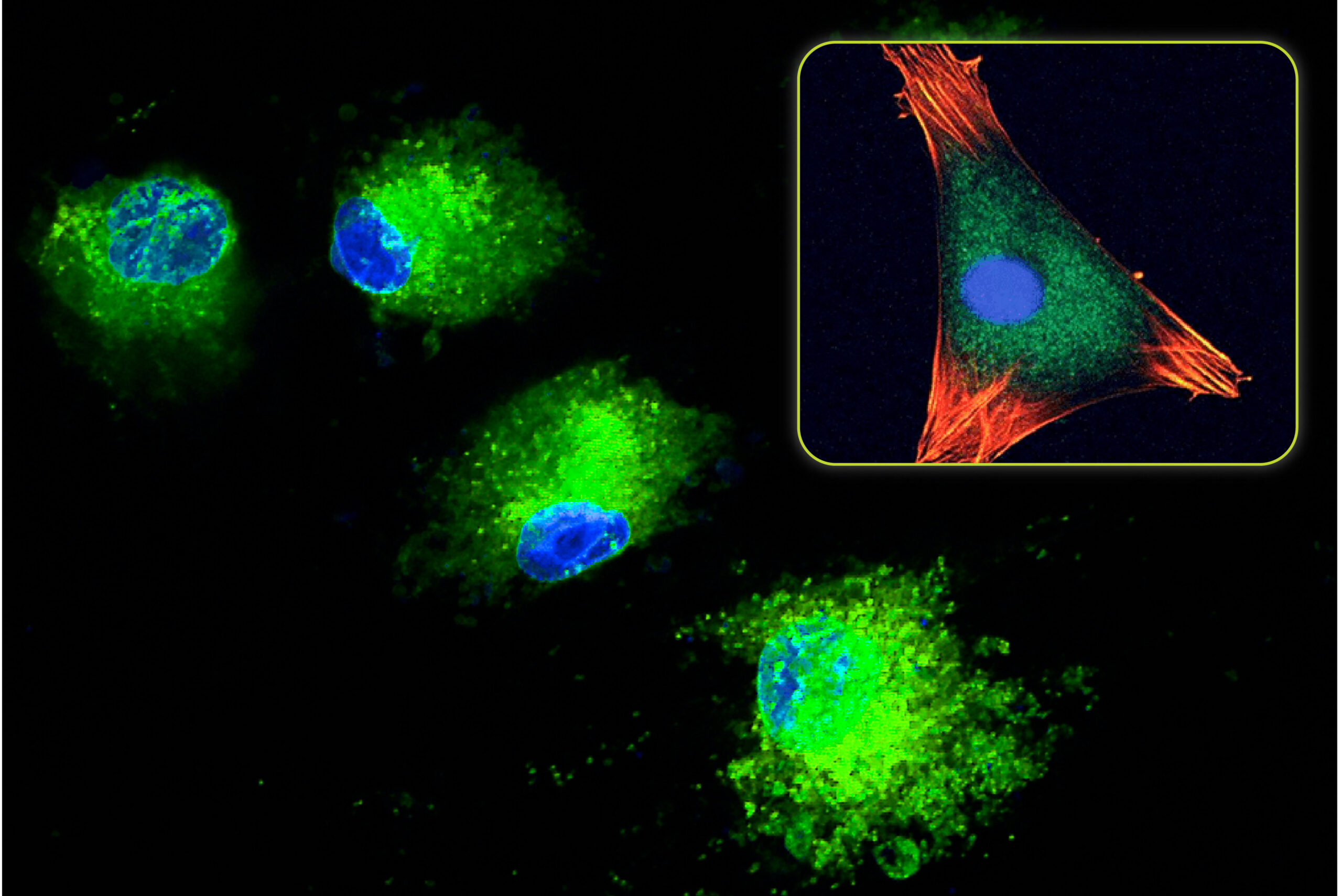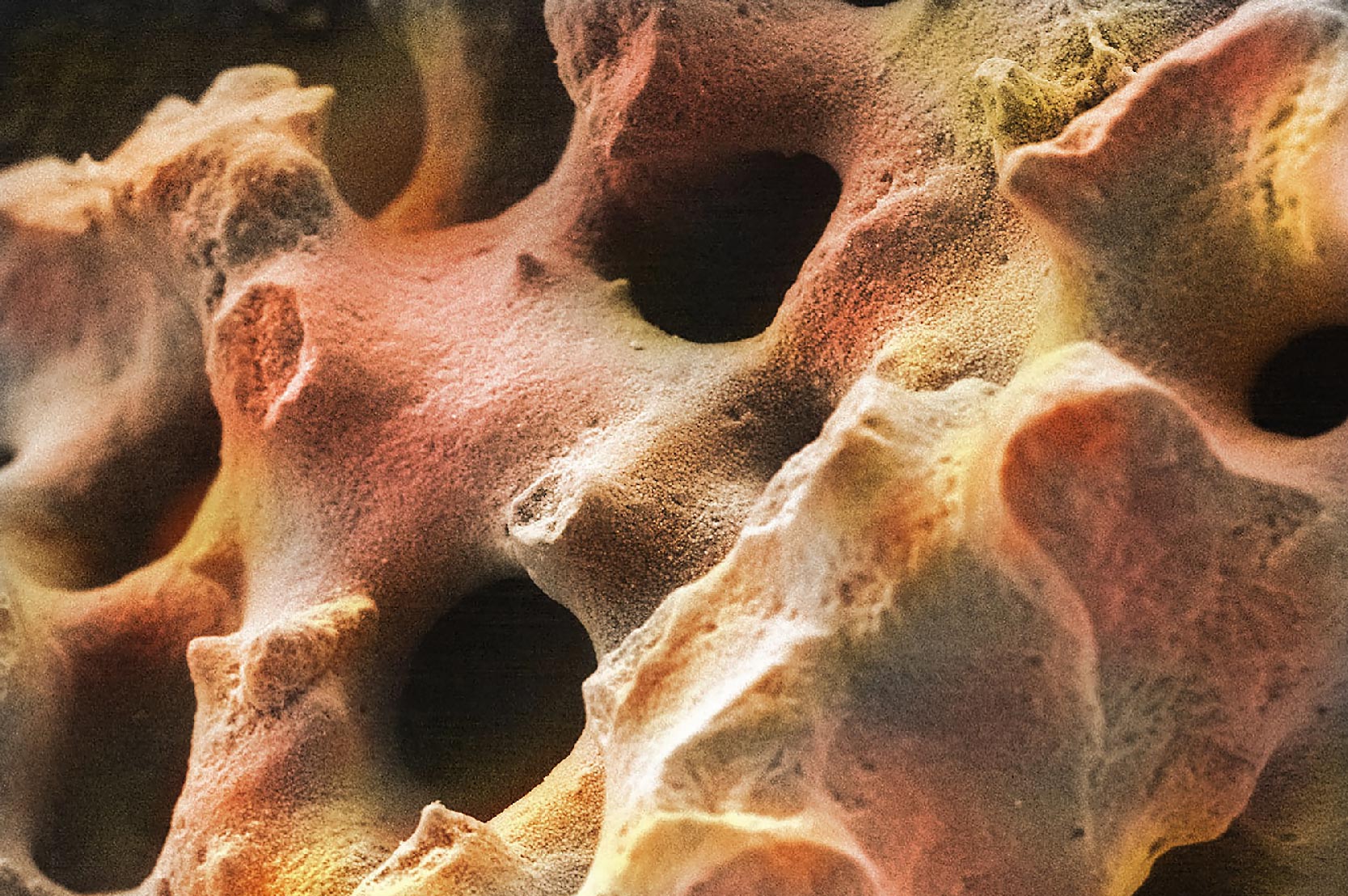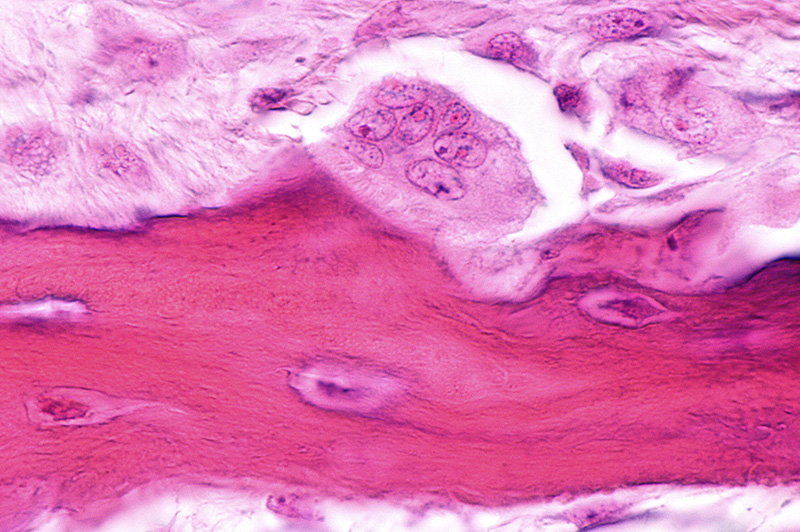Comparison of TrelCor® HCA vs. Bioglass Bioactivity
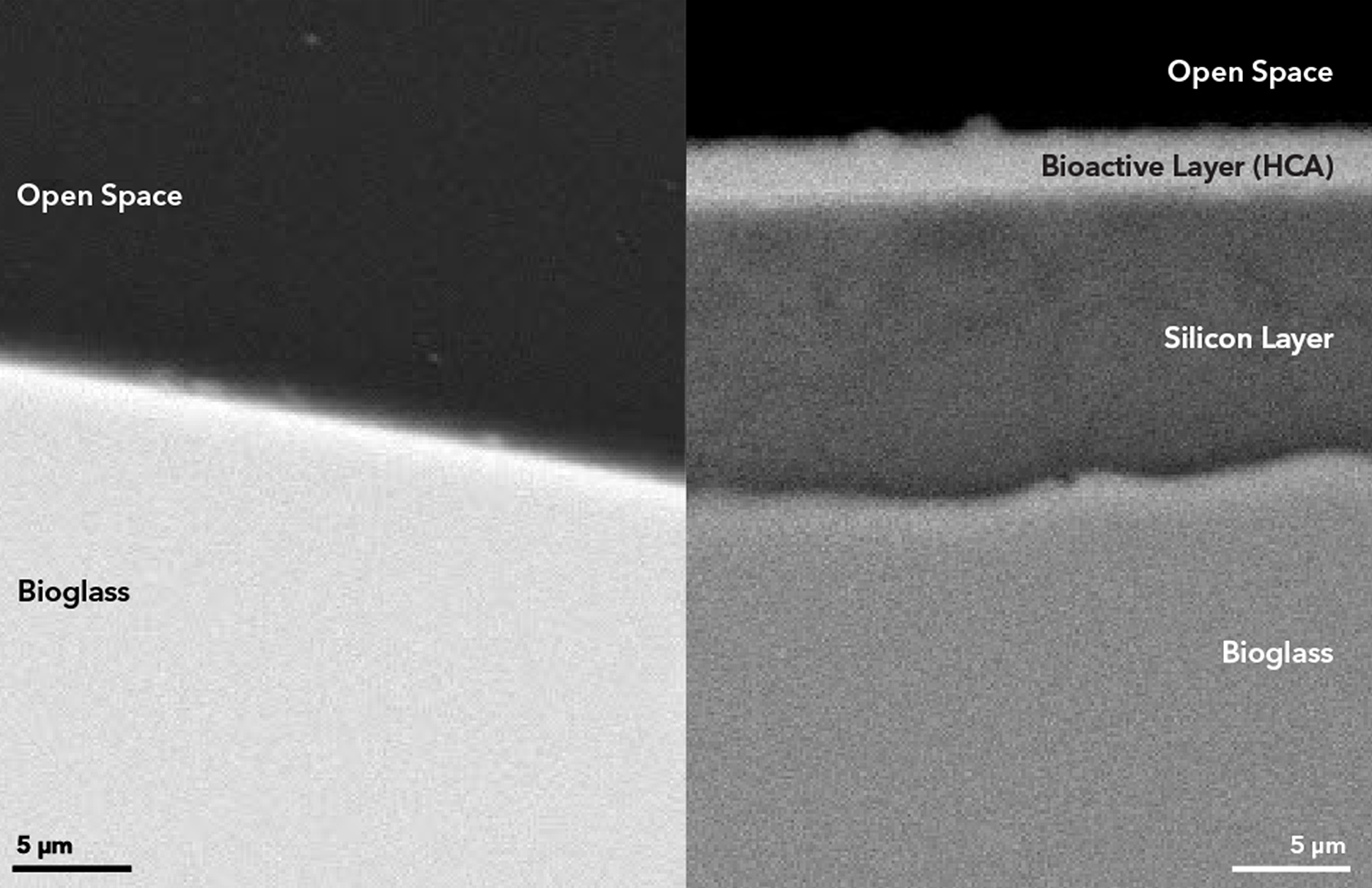
In the context of bone grafting materials, bioactivity is the ability of a material to form a layer of calcium phosphate on its surface when exposed to body fluid. This is different from biological activity, which is associated with bone graft materials that play an active role in the bone healing process. Bioactivity is commonly associated with a class of bone graft materials called bioactive glasses and a specific form of bioactive glass called 45S5 Bioglass (Hench 1973). This property has also been found in a limited number of other ceramics used as bone grafts (Ducheyne 1999).
The advantage of the bioactive layer is that it allows bone to directly bond to the bioactive material and enhances the osteoconductive bone formation response. With Bioglass bone graft products, the bioactive calcium phosphate layer that is formed is actually composed of carbonated apatite, also known as hydroxycarbanoapatite (HCA) (Hench 1991). The additional advantage of HCA is that it speeds up the bone formation process due to its shortened in vivo cellular preparation phase and its similarity to natural bone mineral (Spence 2009, Hiyashi 2019).
In this article, we will compare the HCA layer formed on Bioglass to the HCA surface present on some advanced bone graft materials, such as TrelCor from Biogennix.
The Formation of HCA on Bioglass Bone Grafts
The chemical composition of Bioglass (45 wt.% SiO2, 24.5 wt.% CaO, 24.5 wt.% Na2O, and 6.0 wt.% P2O5) allows it to be slowly dissolved in body fluid over a period of 6-9 months. As this occurs, dissolution ions are released from the glass. Initially upon implantation, the Ca++ and Na+ ions are the first to be released. This results in the formation of a silica-rich layer on the surface of Bioglass. As additional ions are released, they combine with local ions in body fluid to precipitate, or form, a layer of HCA. The formation of the bioactive layer is typically complete within a few weeks. Once formed, the HCA surface allows the bone formation process to begin with the attachment of proteins and cells.
Although a bioactive HCA layer is formed on Bioglass bone grafts, this process takes time and is dependent on various chemical reactions. Glass dissolution needs to occur first so that a silica-rich layer can form. This followed by a local build-up of ions in preparation for the formation of HCA. Once ion levels reach a critical limit, they chemically combine and react to form HCA. With the silica-rich layer functioning as the starting point for HCA crystal formation, crystals begin to appear on the Bioglass surface. The HCA continues to grow from these initial crystals until the entire surface is covered.
This bioactive process is associated with Bioglass and other types of bioactive glass. However, the process takes time and is directly affected by the morphology of the particles in the Bioglass bone graft products. Bioglass dissolution is a surface effect that starts once it is exposed to water. Due to this characteristic, particle shape, size, and associated surface area can impact the rate of bioactivity. Smaller particles with a high surface area can dissolve faster than larger particles. This directly affects the ion release profile and the critical build-up of ions needed to precipitate HCA. Further, the rate of bioactivity can also vary between different formulations of bioactive glass and appears to be dependent of the composition and manufacturing of the glass (Välimäki 2006). Since the silica-rich layer is formed by the preferential dissolution of Ca++ and Na+ ions, changes to these components of the glass can affect how these ions are released during dissolution.
Due to these characteristics the bioactive response can vary between different bioactive glass products. Also, the inherent bioactivity mechanism of the bioactive glass is dependent on its dissolution which results in a delay between the implantation of a Bioglass bone graft material and the initiation of bone growth.
The Presence of HCA in TrelCor Material
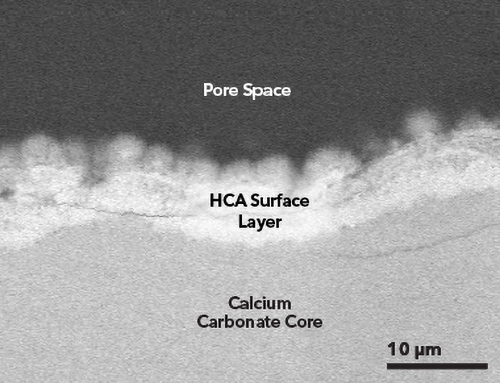
TrelCor advanced bone graft material from Biogennix has a unique dual-ceramic composition with an HCA surface located on a calcium carbonate base-material. The TrelCor manufacturing process starts with a porous, biomimetic calcium carbonate structure that resembles cancellous bone. Using a proprietary chemical process, the surface is chemically converted into HCA. This results in a nanocrystalline HCA region that covers the entire surface of the TrelCor material.
Since the HCA surface is created during its manufacturing, it is present on the TrelCor material prior to implantation. Unlike Bioglass bone grafts which require time to form the bioactive HCA layer, all TrelCor materials have this surface immediately available for the bone formation process to occur.
Surface Ready for Bone Formation
Surgeons seeking to improve patient outcomes are increasingly opting for sophisticated graft materials, such as TrelCor technology with its biphasic composition of HCA and calcium carbonate. When combined with its nanocrystalline surface structure and fully interconnected biomimetic porosity, Biogennix TrelCor technology is an advanced bone grafting solution that can improve clinical outcomes.
As a recognized leader in advanced bone graft technologies, Biogennix is committed to bringing high-quality educational content to our field. This blog will cover technical topics ranging from basic bone graft science to advanced osteobiologic principles. We’ll also discuss market trends and industry challenges. We thank you for reading and invite you to learn more about us here.
